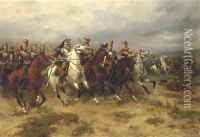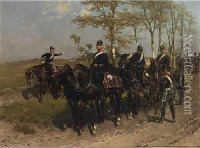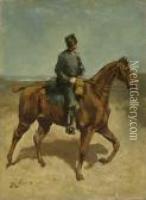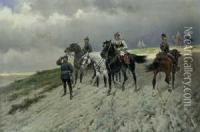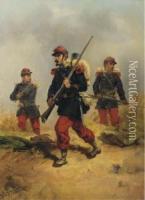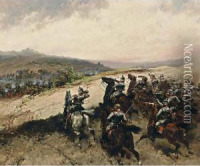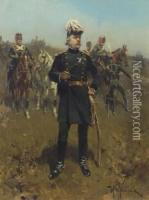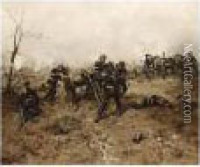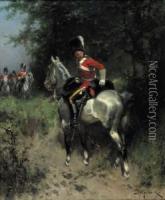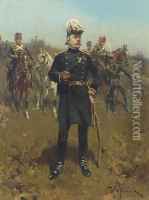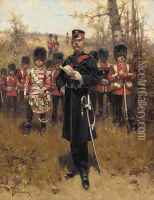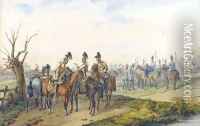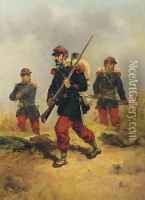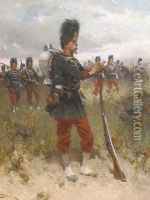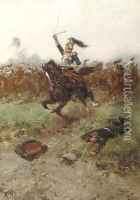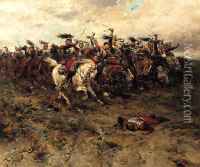Hermanus Willem Koekkoek Paintings
Hermanus Willem Koekkoek was a Dutch painter born on January 1, 1867, in Amsterdam, Netherlands. He belonged to the famous Koekkoek family of artists who were known for their contributions to Dutch romantic landscape painting. His grandfather, Johannes Hermanus Koekkoek, was a marine painter, and his father, Willem Koekkoek, was renowned for his cityscapes and winter scenes. Hermanus Willem continued the family tradition, specializing in military scenes and landscapes.
Hermanus Willem Koekkoek's artistic education began with his father Willem, from whom he learned the basics of drawing and painting. He later moved on to develop a unique style that combined his family's traditional approach with his personal interests. His works often depicted scenes from the Napoleonic Wars and other military engagements from the 19th century, showing a keen interest in historical accuracy and detail.
Koekkoek's paintings were characterized by their fine detail, vibrant colors, and dynamic compositions. He had a particular talent for capturing the movements of soldiers and horses, which brought his battle scenes to life. His landscapes, while less known than his military paintings, also displayed his skill in depicting the natural environment with sensitivity and a keen eye for atmospheric effects.
Throughout his career, Hermanus Willem Koekkoek exhibited his works in various venues and gained recognition among collectors and the public. His paintings appealed to a sense of nostalgia for the past, and he became known for his ability to evoke the grandeur and drama of historical battles.
Hermanus Willem Koekkoek's contribution to the art world continued the legacy of the Koekkoek family, and his works are still appreciated by art historians and collectors today. He died on April 5, 1929, in Amsterdam, leaving behind a body of work that continues to be studied and admired for its historical value and artistic merit.
